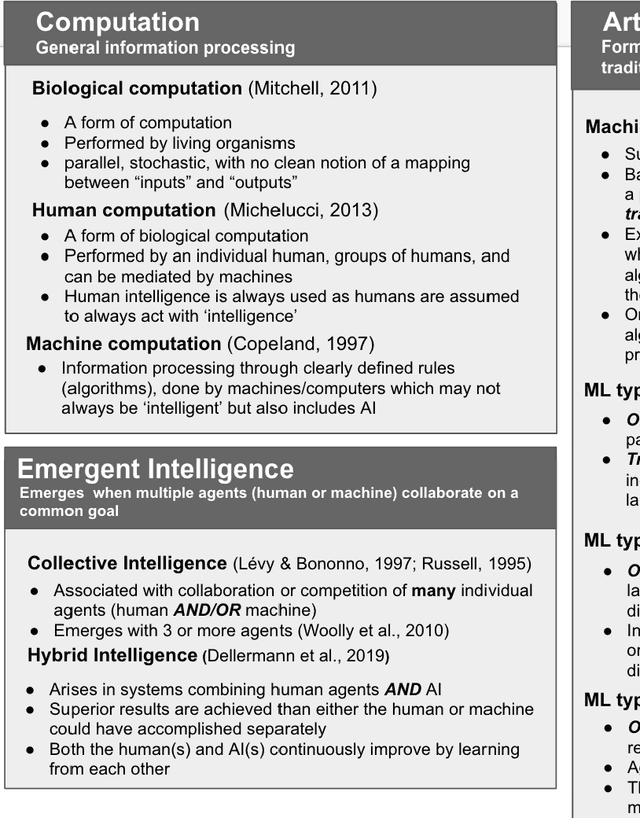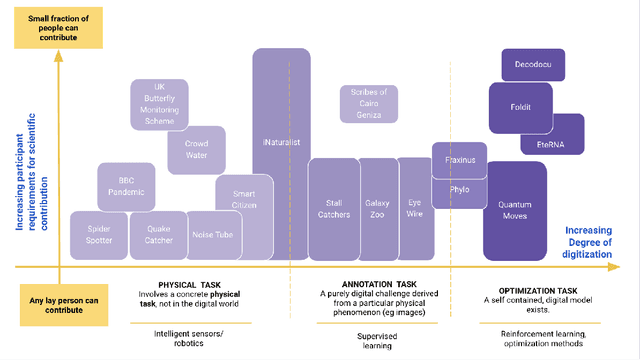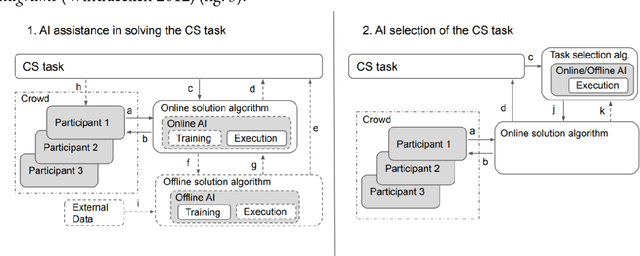Janet Rafner
How Do Hackathons Foster Creativity? Towards AI Collaborative Evaluation of Creativity at Scale
Mar 06, 2025Abstract:Hackathons have become popular collaborative events for accelerating the development of creative ideas and prototypes. There are several case studies showcasing creative outcomes across domains such as industry, education, and research. However, there are no large-scale studies on creativity in hackathons which can advance theory on how hackathon formats lead to creative outcomes. We conducted a computational analysis of 193,353 hackathon projects. By operationalizing creativity through usefulness and novelty, we refined our dataset to 10,363 projects, allowing us to analyze how participant characteristics, collaboration patterns, and hackathon setups influence the development of creative projects. The contribution of our paper is twofold: We identified means for organizers to foster creativity in hackathons. We also explore the use of large language models (LLMs) to augment the evaluation of creative outcomes and discuss challenges and opportunities of doing this, which has implications for creativity research at large.
Revisiting Citizen Science Through the Lens of Hybrid Intelligence
Apr 30, 2021



Abstract:Artificial Intelligence (AI) can augment and sometimes even replace human cognition. Inspired by efforts to value human agency alongside productivity, we discuss the benefits of solving Citizen Science (CS) tasks with Hybrid Intelligence (HI), a synergetic mixture of human and artificial intelligence. Currently there is no clear framework or methodology on how to create such an effective mixture. Due to the unique participant-centered set of values and the abundance of tasks drawing upon both human common sense and complex 21st century skills, we believe that the field of CS offers an invaluable testbed for the development of HI and human-centered AI of the 21st century, while benefiting CS as well. In order to investigate this potential, we first relate CS to adjacent computational disciplines. Then, we demonstrate that CS projects can be grouped according to their potential for HI-enhancement by examining two key dimensions: the level of digitization and the amount of knowledge or experience required for participation. Finally, we propose a framework for types of human-AI interaction in CS based on established criteria of HI. This "HI lens" provides the CS community with an overview of several ways to utilize the combination of AI and human intelligence in their projects. It also allows the AI community to gain ideas on how developing AI in CS projects can further their own field.
The power of pictures: using ML assisted image generation to engage the crowd in complex socioscientific problems
Oct 15, 2020
Abstract:Human-computer image generation using Generative Adversarial Networks (GANs) is becoming a well-established methodology for casual entertainment and open artistic exploration. Here, we take the interaction a step further by weaving in carefully structured design elements to transform the activity of ML-assisted imaged generation into a catalyst for large-scale popular dialogue on complex socioscientific problems such as the United Nations Sustainable Development Goals (SDGs) and as a gateway for public participation in research.
 Add to Chrome
Add to Chrome Add to Firefox
Add to Firefox Add to Edge
Add to Edge